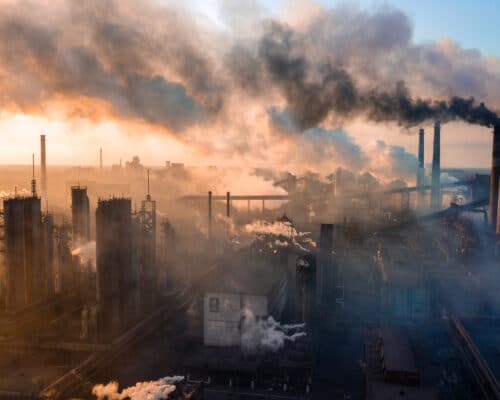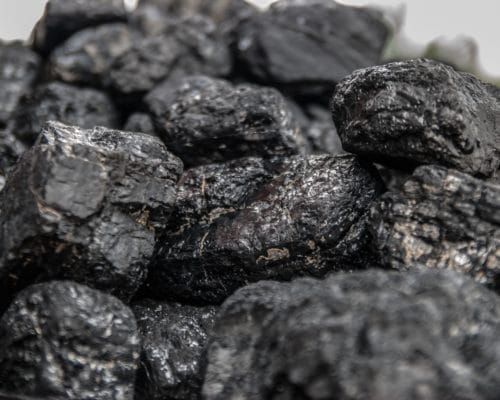Go Clean ICBC: Fossil Fuels Continue to Dominate the Investments of Chinese Banks
Parilov/Shutterstock.com
13 February 2023 – by Viktor Tachev Comments (0)
Despite leading the global clean energy transition, China continues to support coal – a trend evident from the ICBC investments and the investments and financial products of other state-owned and commercial banks. Should it continue, stakeholders risk facing costly financial and reputational consequences.
The Global Pivot Back to Coal
At COP26, countries agreed to phase out coal, adding the decision to the final resolution of the climate conference. However, instead of COP27 sealing the fate of coal, it didn’t offer significant changes. Countries agreed to phase down “unabated coal”, which left the door open for the potential extension of the dirtiest fuel’s life.
According to the IEA’s Coal in Net-Zero Transitions report, coal consumption is at an all-time high. In 2021, emissions from coal generation rose 6.6% year-over-year or around 100 million tonnes above the previous peak in 2018. Furthermore, coal demand will likely remain robust in the near future, particularly in Asia.
A report by Go Clean ICBC reveals that banks continue to invest in fossil fuels at scale. At the same time, just a fraction of their overall financial assistance goes to renewables. The leading fossil fuel financiers are predominantly from the US and Japan.
The Russia-Ukraine War and High LNG Prices
Russia’s invasion of Ukraine and the imposed sanctions have dramatically affected global energy markets. LNG and natural gas prices have hit record highs, pricing various countries out of the market. Many nations were left starving for power – forced to face energy shortages and persistent blackouts.
As a result, developing and developed countries started to look for alternatives. While some nations opted for cleaner, cheaper and more secure options, like renewables, others switched back to coal even though its price was also at record highs.
China Goes Back and Forth on Coal Policies
In September 2021, China pledged to stop financing coal-fired power plants abroad. It also promised to increase its support for developing countries that wished to expand their renewable energy capacity.
Much progress has been made since the announcement. Today, China-backed fossil fuel financing is in a steady decline.
However, the country remains the main supporter of coal – both as a domestic consumer and through its investments in power projects abroad.
Coal is responsible for 63% of China’s power generation. The country accounts for more than 50% of global coal demand. Its power sector alone is responsible for a third.
Furthermore, the number of new coal plant approvals in 2021 and 2022 continued to be the highest in China.
According to Global Energy Monitor, China remains the biggest investor in coal plant infrastructure, with a total of 33.48 GW. The support is provided through both private and state institutions. Moreover, since the country announced that it would stop financing coal plants abroad, it has built 14 overseas coal plants.
ICBC Investments in Coal
The Industrial and Commercial Bank of China Ltd (ICBC) is the world’s largest multinational bank and is a major influencer in global energy financing. Historically, ICBC has had one of the worst records among the world’s largest banks in terms of coal financing.
While in May 2021, the ICBC said it would “produce a roadmap and timetable for a gradual withdrawal of coal financing”, it continues doing business as usual.
While ICBC has halted financial support for 19.4 GW of international coal projects, today, it remains the biggest government-owned commercial bank in terms of coal financing abroad. The financial institution has a pipeline of nine projects (7.5 GW total capacity) in Europe, Asia and Africa.
According to Go Clean ICBC’s latest report, between January 2016 and July 2022, three-quarters (USD 53 billion) of ICBC’s energy financing went to fossil fuels. Just one-quarter (USD 17 billion) went to renewables.
At the same time, the bank claims that it aspires to be China’s leader in green finance. It is worth noting, however, that ICBC is, by far, the biggest supporter of renewable energy among the banks studied in Go Clean ICBC’s analysis.
However, the dynamics of the investments of ICBC reveal that its share of clean energy financing remains stagnant. At the same time, the financial support for fossil fuels is on a steady upward trajectory.
Furthermore, as part of the bank’s total energy financing, the share of fossil fuel support is increasing at the expense of renewables.
The Risks Of Coal Investments
The pivot back to coal is a temporary market reaction. Any country or financing institution that fails to recognise this will expose itself to massive risks, including:
Financial Risks and Stranded Assets
Two-thirds of the renewables added in 2021 had lower costs than the cheapest coal-fired options in G20 countries. IRENA estimates the savings in power generation costs in 2022 at USD 55 billion – due to the clean energy capacity installed in 2021.
Furthermore, renewables paired with energy storage are already cheaper than coal. And the gap between renewables and fossil fuels continues to widen. The power costs from new onshore wind and solar projects are 40% lower than those of new coal-fired and gas-fired units. Currently, the five countries most dependent on coal are in Asia.
The average coal plant in China, Indonesia, Malaysia and the Philippines is 13 years old. Meanwhile, in Vietnam, the average age is just eight years old. Considering that the typical life span of coal plants is around 40 years, Asian countries would have to decommission their coal plants prematurely.
Currently, over USD 1 trillion of capital is locked in coal plants. Continuing to invest in new capacity will only burden countries and financing institutions with more stranded assets. According to some studies, the figure might rise to USD 2.3 trillion by 2050.
Reputational Risks
Activists and public groups actively target banks and financing institutions that backtrack on their climate pledges.
As a member of various alliances for responsible investing, ICBC’s activity is always under the microscope. The bank has been continuously exposed for its reluctance to quit coal power financing and its ongoing support for coal companies. Activist groups from countries affected by climate change have consistently urged the bank’s leadership to reconsider its fossil fuel financing policies and shift its support towards clean energy projects instead.
ICBC has over 400 overseas subsidiaries and 131 branches in 21 Belt and Road countries and regions. The bank also has a large number of international investors. In a world where countries and financing institutions are moving away from coal, ICBC should also follow if it wants to avoid exposing itself and its stakeholders to massive reputational risk.
China and ICBC Can Lead Global Clean Energy Investments
China has already established itself as the world’s leading clean energy powerhouse. The country champions every aspect of the net-zero transition – from renewable energy capacity to the development and manufacturing of required technology and infrastructure.
The IEA says that coal demand will plateau soon, and the current rise in coal investment will be short-lived. However, this depends entirely on China. It can single-handedly determine the fate of coal, especially since the country accounts for more than half of the world’s coal demand. The 26 overseas coal power projects cancelled between September 2021 and the end of August 2022 show that the country can make a change. However, the world needs its financial institutions to follow suit to make a real difference.
As China’s largest bank and the world’s largest multinational bank, ICBC has the opportunity to lead the way in the energy transition. The first step in this process would be to significantly increase clean energy project financing at the expense of fossil fuel support.
by Viktor Tachev
Viktor has years of experience in financial markets and energy finance, working as a marketing consultant and content creator for leading institutions, NGOs, and tech startups. He is a regular contributor to knowledge hubs and magazines, tackling the latest trends in sustainability and green energy.
Read more

